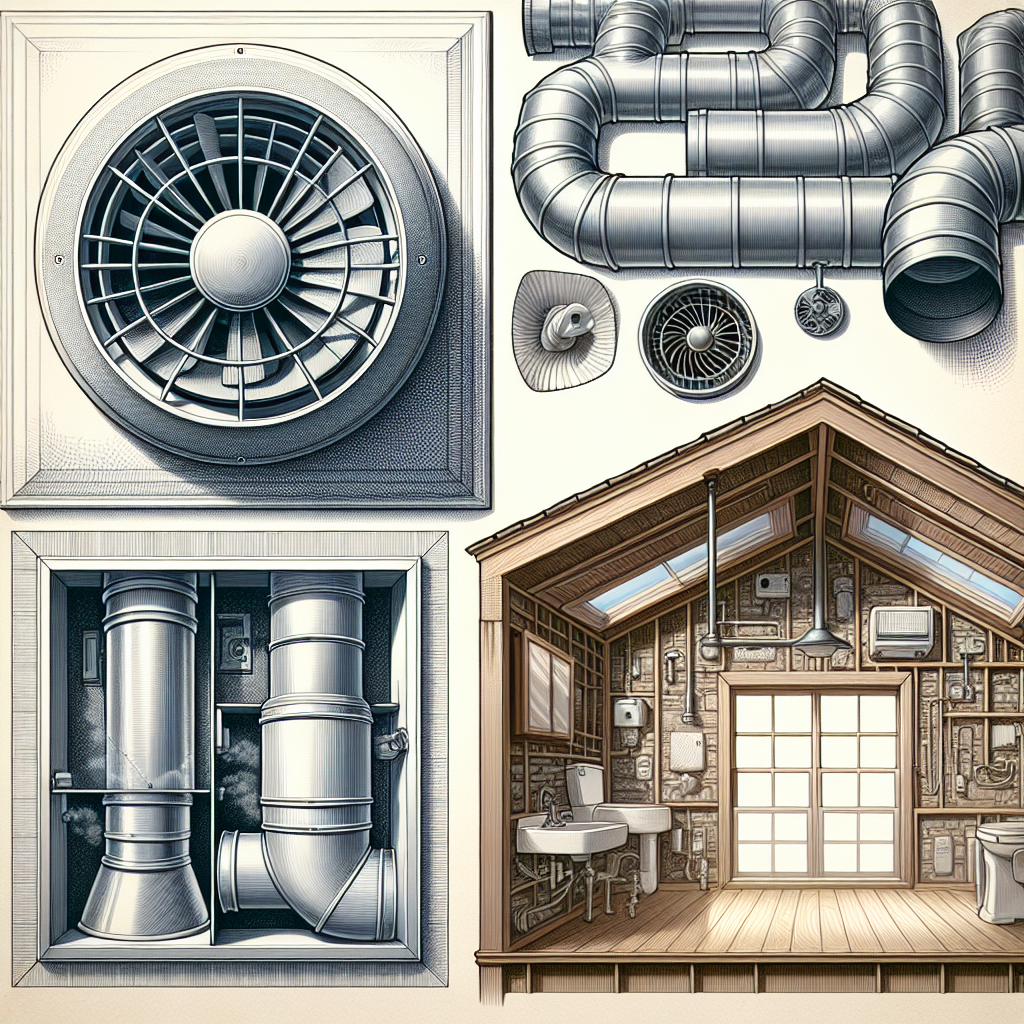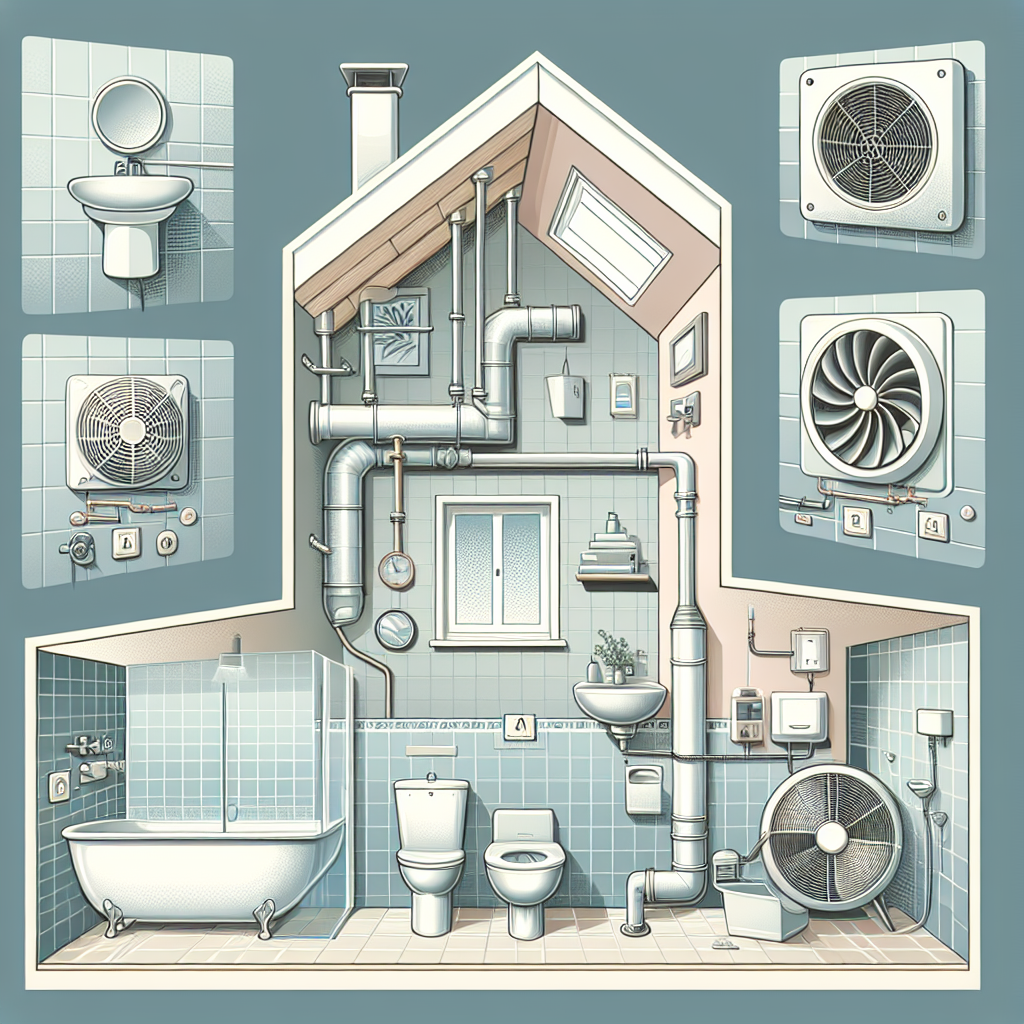Types of Bathroom Ventilation Systems

Bathroom ventilation is an essential aspect of any home or commercial building. It helps to remove excess moisture, odors, and pollutants from the air, ensuring a healthy and comfortable environment. There are various types of bathroom ventilation systems available, each with its own advantages and disadvantages. In this article, we will explore the different types of bathroom ventilation systems and their benefits.
1. Exhaust Fans
Exhaust fans are the most common type of bathroom ventilation system. They work by drawing in air from the bathroom and expelling it outside. These fans are typically installed on the ceiling or wall and are connected to a duct that leads to the exterior of the building.
Exhaust fans are effective at removing moisture and odors from the bathroom, preventing the growth of mold and mildew. They also help to improve indoor air quality by removing pollutants such as volatile organic compounds (VOCs) and carbon monoxide.
When choosing an exhaust fan, it is important to consider the size of the bathroom. A fan with a higher cubic feet per minute (CFM) rating is required for larger bathrooms to ensure adequate ventilation. Additionally, it is recommended to choose a fan with a low noise level to avoid disturbance.
2. Ventilation Fans with Heat and Light
Ventilation fans with heat and light combine the functionality of an exhaust fan with additional features. These fans not only provide ventilation but also offer heating and lighting options.
The heating function of these fans is particularly useful during colder months when the bathroom may feel chilly. The built-in heating element helps to warm up the space, providing comfort to users. The lighting feature, on the other hand, enhances visibility in the bathroom, making it easier to perform tasks such as shaving or applying makeup.
While ventilation fans with heat and light offer added convenience, they may require professional installation due to the electrical wiring involved. It is important to consult a qualified electrician to ensure proper installation and compliance with safety regulations.
3. Heat Recovery Ventilators (HRVs)
Heat recovery ventilators (HRVs) are advanced bathroom ventilation systems that not only remove moisture and odors but also recover heat from the outgoing air. These systems are particularly beneficial in colder climates where energy efficiency is a priority.
HRVs work by extracting heat from the stale air being expelled from the bathroom and transferring it to the fresh air being brought in from outside. This heat exchange process helps to preheat the incoming air, reducing the load on the heating system and saving energy.
In addition to energy savings, HRVs also help to maintain a comfortable indoor environment by providing a constant supply of fresh air. They are equipped with filters that remove dust, pollen, and other allergens, improving indoor air quality.
4. Window Ventilation
Window ventilation is a simple and cost-effective method of ventilating a bathroom. It involves opening a window to allow fresh air to enter and stale air to exit. While this method may not be as effective as other ventilation systems, it can be a viable option for small bathrooms or in situations where installing a ventilation fan is not feasible.
When using window ventilation, it is important to ensure that the window is properly sealed when closed to prevent drafts and heat loss. Additionally, it is recommended to install a window screen to keep insects and debris out of the bathroom.
5. Ductless Ventilation Systems
Ductless ventilation systems, also known as recirculating or duct-free systems, are an alternative to traditional exhaust fans. These systems do not require ductwork and instead use filters to remove moisture and odors from the air.
Ductless ventilation systems are relatively easy to install and are suitable for bathrooms where ductwork installation is not possible or practical. They are also a good option for rental properties or buildings with limited space.
However, it is important to note that ductless systems do not remove pollutants from the air, as they recirculate the air back into the bathroom. They are primarily designed to control moisture and odors.
Frequently Asked Questions about “Types of Bathroom Ventilation Systems”
1. What is the purpose of a bathroom ventilation system?
A bathroom ventilation system helps to remove excess moisture, odors, and pollutants from the air. It prevents the growth of mold and mildew, improves indoor air quality, and creates a comfortable and healthy environment.
2. How do exhaust fans work?
Exhaust fans work by drawing in air from the bathroom and expelling it outside through a duct. This process helps to remove moisture, odors, and pollutants from the air, ensuring proper ventilation.
3. Are ventilation fans with heat and light worth the investment?
Ventilation fans with heat and light offer added convenience by providing heating and lighting options in addition to ventilation. They can be particularly useful during colder months when the bathroom may feel chilly. However, they may require professional installation and can be more expensive than standard exhaust fans.
4. How do heat recovery ventilators (HRVs) work?
Heat recovery ventilators (HRVs) extract heat from the outgoing air and transfer it to the incoming fresh air. This heat exchange process helps to preheat the incoming air, reducing the load on the heating system and saving energy. HRVs also improve indoor air quality by providing a constant supply of fresh air.
5. Are window ventilation systems effective?
Window ventilation systems can be a simple and cost-effective method of ventilating a bathroom. While they may not be as effective as other ventilation systems, they can be a viable option for small bathrooms or in situations where installing a ventilation fan is not feasible. It is important to ensure that the window is properly sealed when closed to prevent drafts and heat loss.
Summary
Bathroom ventilation is crucial for maintaining a healthy and comfortable indoor environment. There are various types of bathroom ventilation systems available, each with its own advantages and disadvantages. Exhaust fans are the most common type and are effective at removing moisture and odors. Ventilation fans with heat and light offer additional features such as heating and lighting options. Heat recovery ventilators (HRVs) recover heat from the outgoing air, saving energy and improving indoor air quality. Window ventilation is a simple and cost-effective option, while ductless ventilation systems are suitable for situations where ductwork installation is not possible. Understanding the different types of bathroom ventilation systems can help homeowners and building managers make informed decisions to ensure proper ventilation and a healthy living space.

